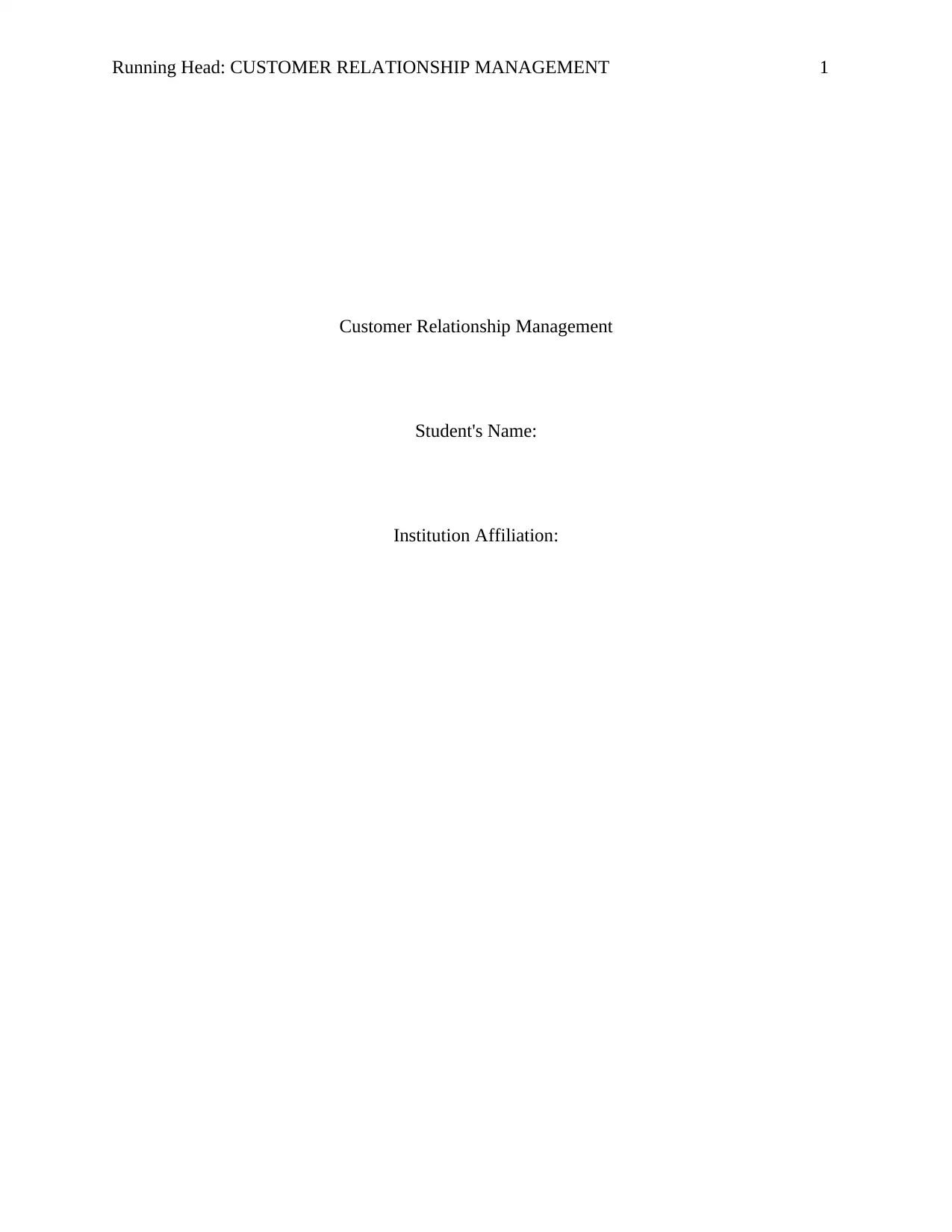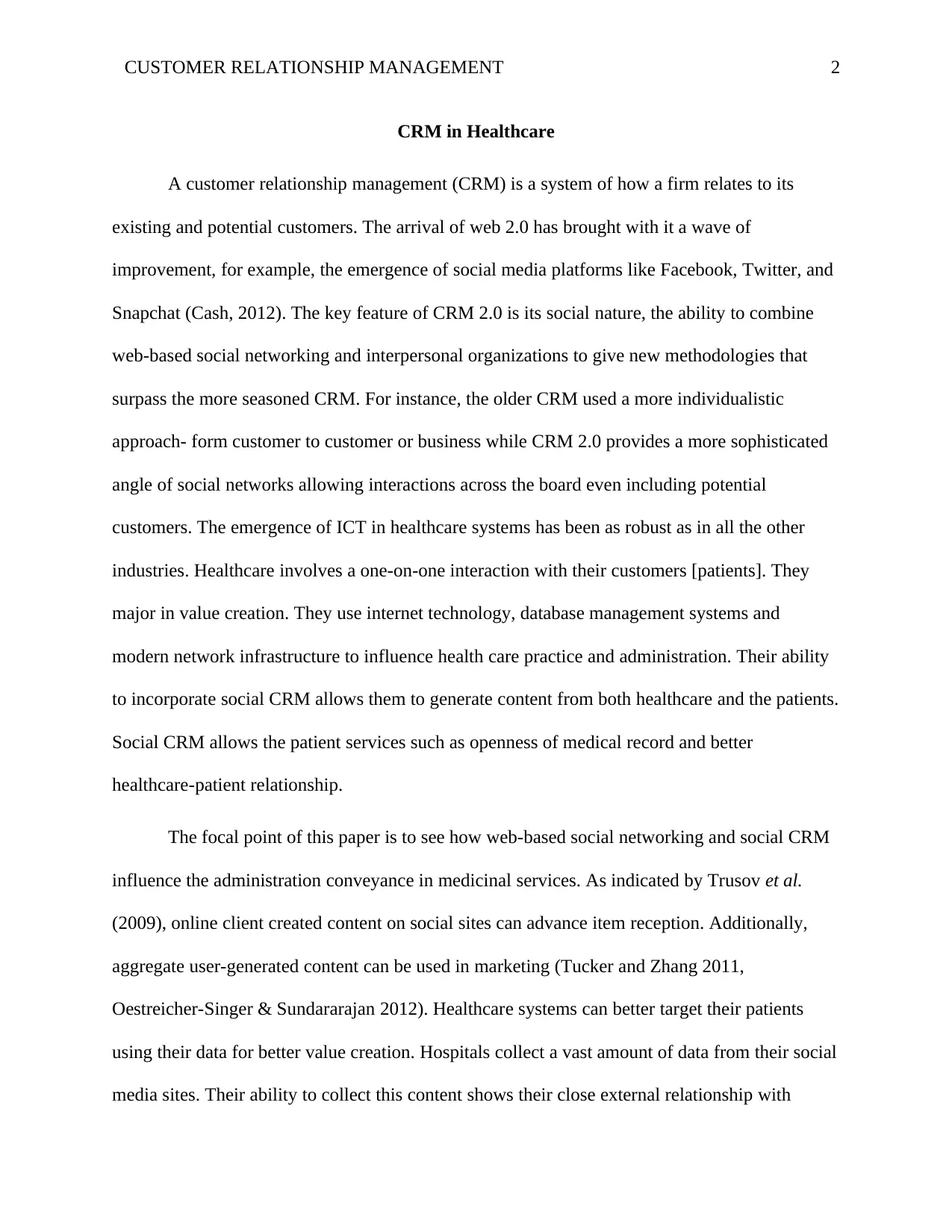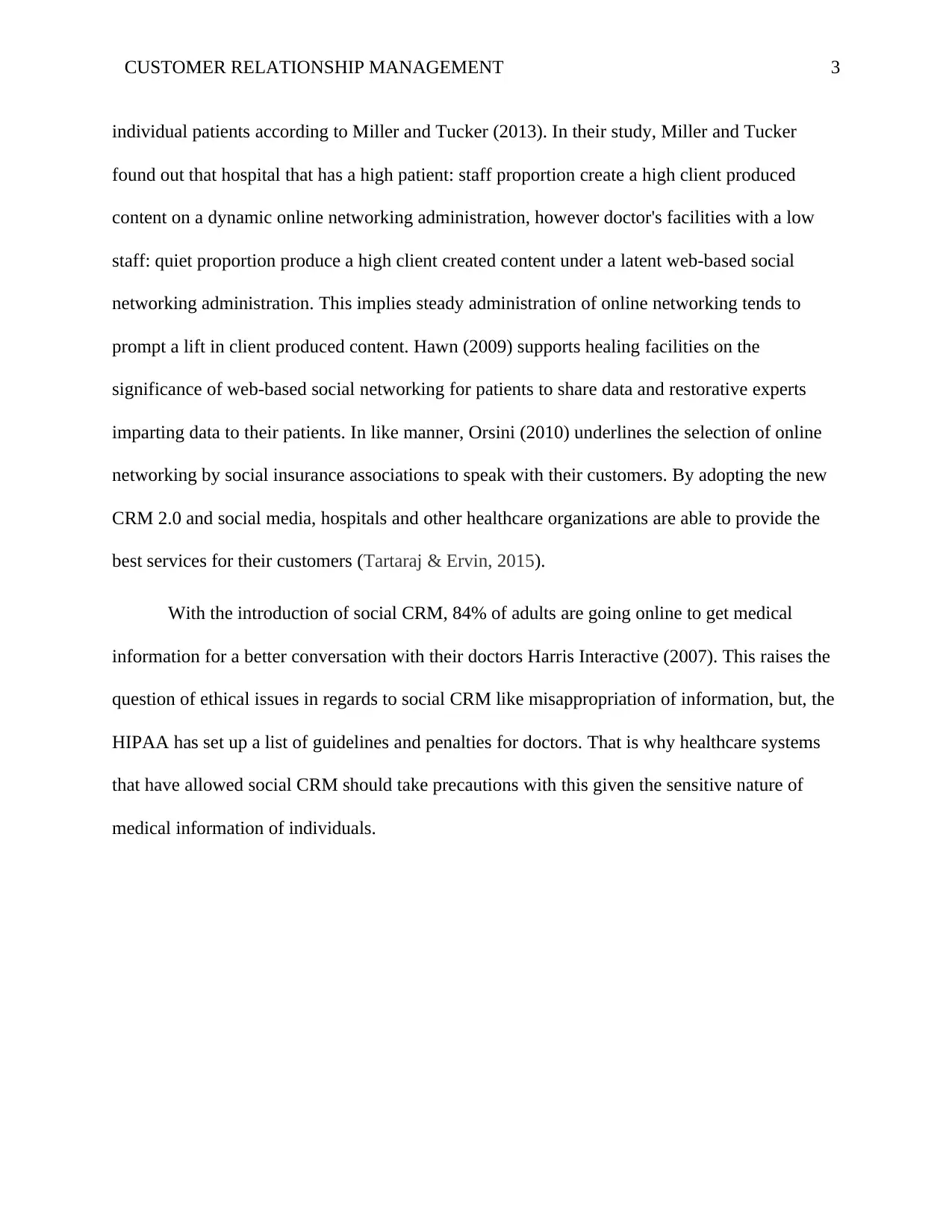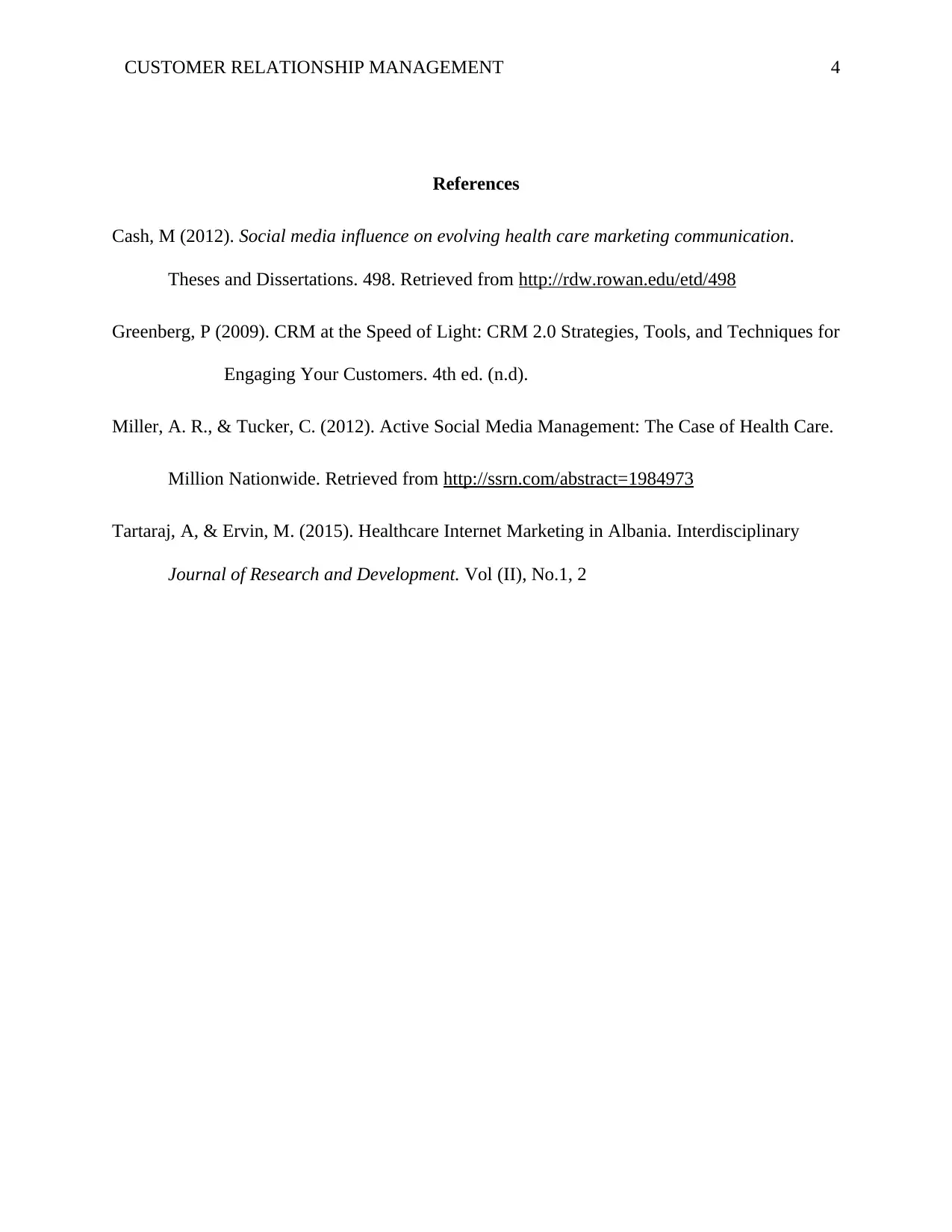Impact of Web-Based Social Networking on Healthcare CRM 2.0
VerifiedAdded on 2023/06/13
|4
|747
|371
Report
AI Summary
This report explores the impact of Customer Relationship Management (CRM) 2.0 and web-based social networking on healthcare service delivery. It highlights how the emergence of social media platforms has revolutionized CRM, shifting from individualistic approaches to social networks that foster broader interactions. The integration of ICT in healthcare, coupled with social CRM, enables better patient services, such as open medical records and improved healthcare-patient relationships. The report emphasizes the importance of online user-generated content in promoting healthcare services and facilitating targeted patient care. It also addresses the ethical considerations of social CRM, such as information misappropriation, while underscoring the need for healthcare systems to adopt precautions in handling sensitive medical information, referencing HIPAA guidelines.
1 out of 4











![[object Object]](/_next/static/media/star-bottom.7253800d.svg)